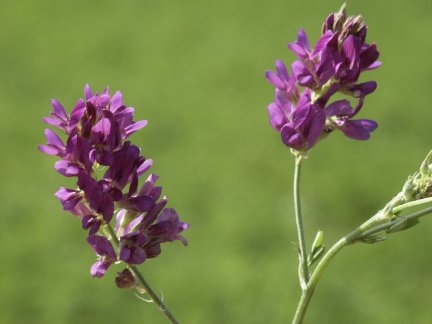
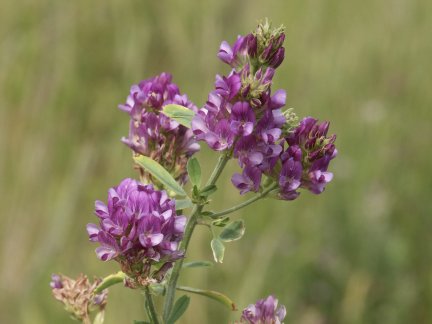

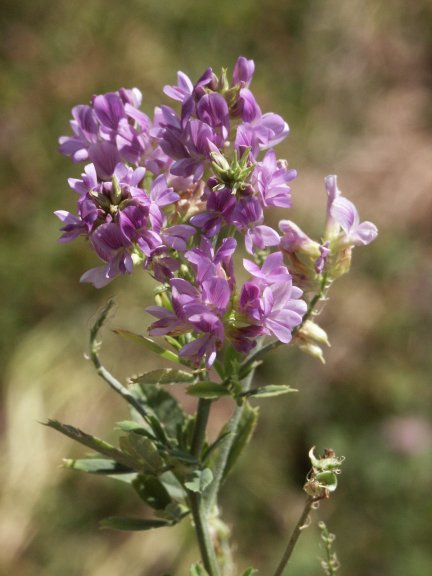
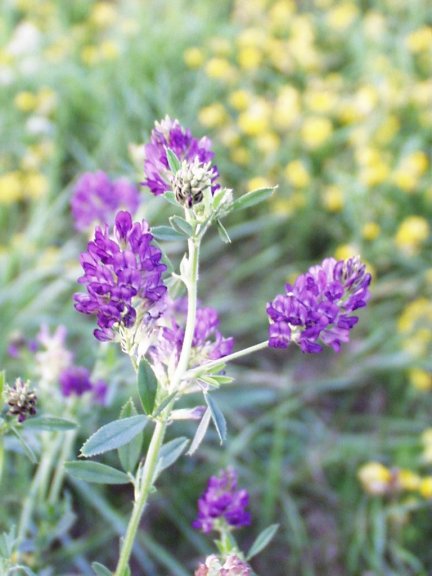
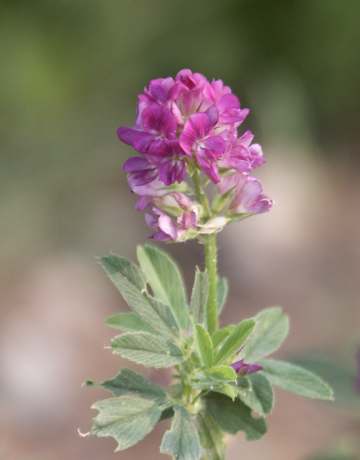
Alfalfa, or lucerne (genus Medicago),
is an herbaceous perennial belonging to the LEGUME family and grown as
a forage crop. It evolved in central Asia, an area with cold winters
and hot, dry summers, and spread to Europe, East Asia, Africa and the New
World.
Alfalfa flowers range from purple
to yellow and are borne on a long raceme (ie, structure composed of short
stalks spaced equally along a central axis). The seed pods are spiral-shaped
from which small, kidney-shaped seeds are produced. The trifoliate leaves
are arranged alternately on the stem.
The root system is characterized
by a deep taproot which, under favourable drainage conditions, may penetrate
7.5 m.
The erect stems usually grow
60- 90 cm high; regrowth after cutting is very rapid, even in hot summers.
When alfalfa is cut for silage or hay, at the later flower-bud stage, the
protein content may vary from 10% to 20%.
Since 1950, many improved cultivars
have been bred to increase alfalfa use in Canada. The yellow- flowered
M. falcata has been developed for dry- land prairie; blue-flowered M. sativa
has been made disease- and insect-resistant to maintain hectarages in areas
of Canada with favourable temperature, drainage and soil acidity. Yield
varies greatly with temperature and moisture conditions: eg, in the
Edmonton area, 2 cuts yield 5136 kg/ha; in Winnipeg, 6787 kg/ha; in Guelph,
3 cuts yield 13,619 kg/ha. Alfalfa will continue to be the most important
forage for dairy cattle. (Alfalfa sprouts have also become a popular addition
to salads and sandwiches.)
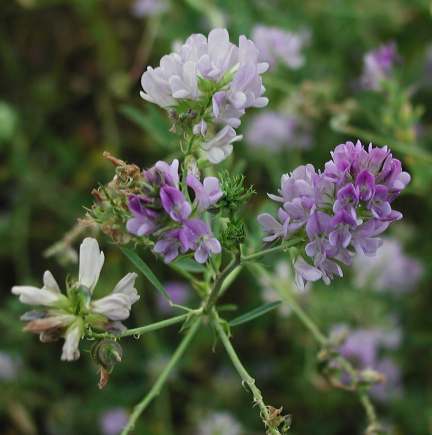
Go
To Flowers By Colour
Go
To White Flowers
Go
To Blue Flowers
Go
To Yellow Flowers
Go
To Red or Pink Flowers
Go
To Green Flowers
Go
To Orange Flowers
Go To
Index Page